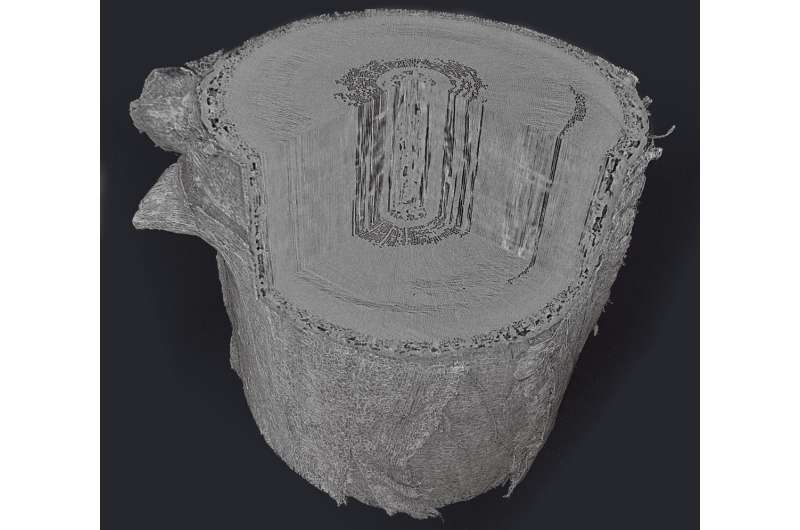MRI imaging moves from hospitals to forests to help sick trees

Dr Brendan Choat from the Hawkesbury Institute for the Environment is using advanced imaging techniques normally used for human patients to gain insights into the way plants deal with severe droughts, and how quickly different species recover.
Dr Choat has successfully scanned tree branches using non-invasive imaging techniques commonplace in hospitals, such as CT scanning and MRI imaging, to investigate how droughts impact the transportation of water in plants The research was conducted at the University's Biomedical Imaging facility in Campbelltown.
The study, published in the Journal of Plant Physiology, details how these advanced medical techniques allow the visualisation of plants at unprecedented resolution and time scales.
"Traditionally, researchers looking to monitor the health of trees were forced to use techniques that were indirect and prone to inaccuracies, such as removing tree branches and spinning them in centrifuges," says Dr Choat.
"This study shows that we can have much more confidence in our results by taking the advanced imaging technology we currently use on human patients in hospitals and applying it to plants to monitor their health. This provides a new window into how plants respond to environmental stresses"
Even greater potential for discovery is provided by powerful facilities such as the Australian Synchrotron. Dr Choat is currently working with scientists at the Australian Synchrotron's Imaging and Medical Beamline to improve our understanding of how plants survive and recover from drought.
When trees are stressed in times of reduced rainfall and increased heat, tiny air-bubbles form, preventing the plants from transporting water from the soil through their trunks. These air-bubbles, called embolisms, are now recognised internationally as one of the principal reasons plants die during droughts.
"Droughts are devastating for farmers, and can cause ecological disasters such as forest dieback events, as we saw in Tasmania in early 2013, and in the Amazon rainforest following long-term reductions in rainfall," says Dr Choat.
"By utilising advanced imaging techniques, we can now accurately determine the health of trees and plants under threat, and put in place more effective measures to protect key crops and ecologically important species."
"Looking ahead, this breakthrough will increase the information available to farmers making costly decisions regarding crop plants, as well as feed into development of crop species with better drought tolerance."
Provided by University of Western Sydney




















